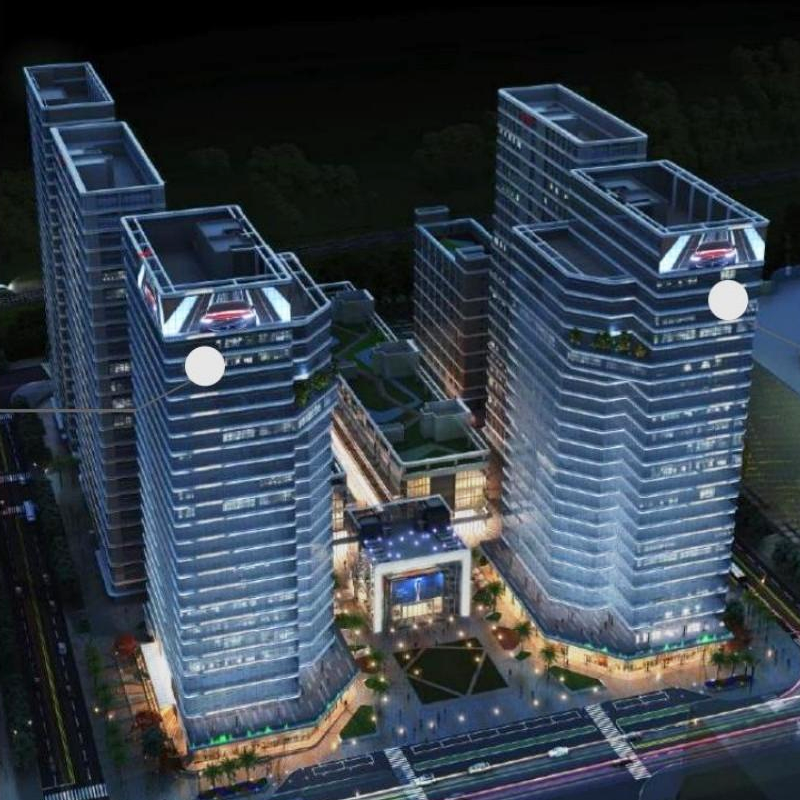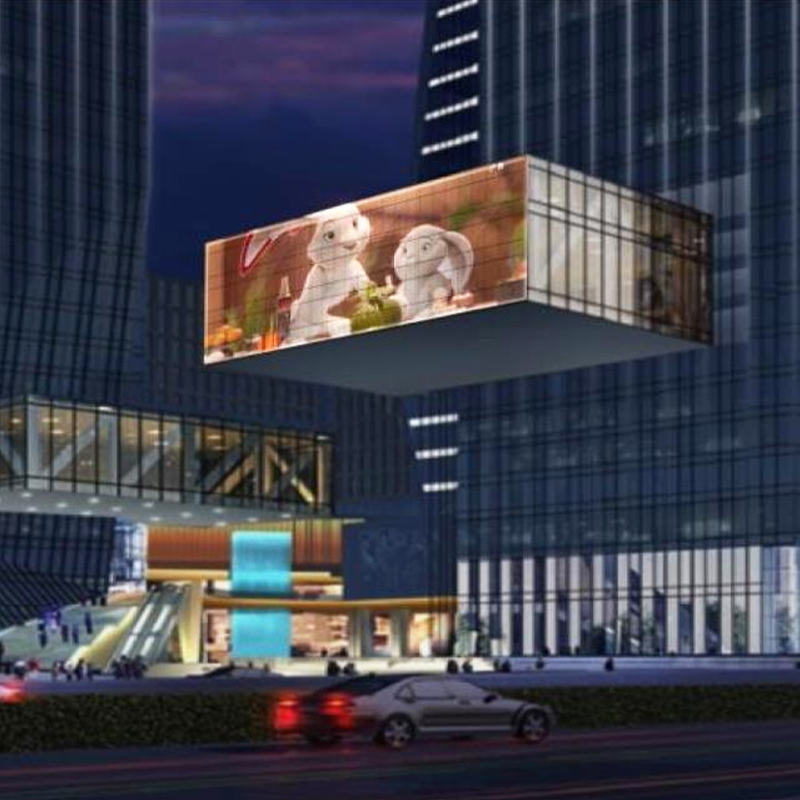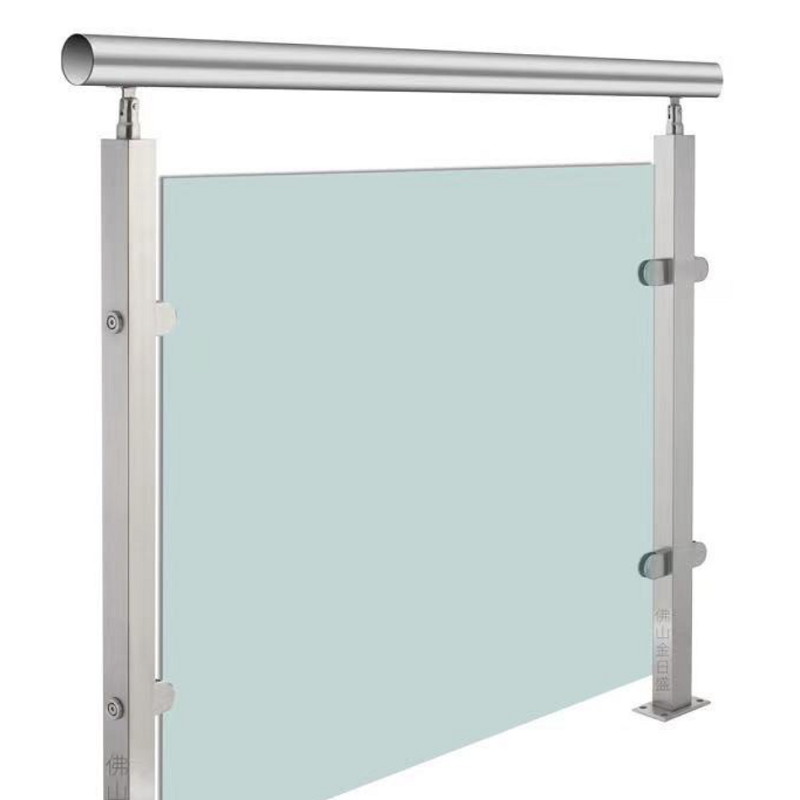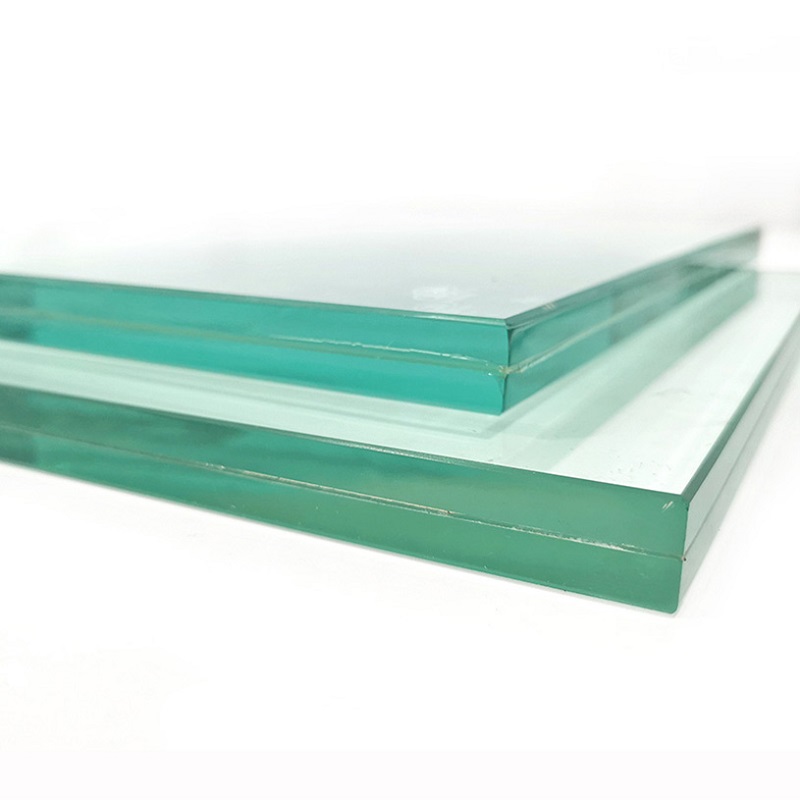Photovoltaic Glass: Illuminating the Green Aesthetic Revolution of Future Cities

In the process of contemporary urbanization, building curtain walls have evolved from purely functional protective structures into crucial elements that shape the city's image and convey its aesthetic concepts. The advent of the "night economy" era has particularly elevated urban lighting projects beyond simple decoration; they are now strategic initiatives for local governments, vital for enhancing the city's character, stimulating nighttime vitality, and promoting economic development. These projects do more than make the city visually "brighter" at night; they become a dynamic business card, showcasing the city's spirit, energy, and prosperity. Within this profound transformation of the urban landscape, the emergence of photovoltaic glass—a revolutionary innovative material—is fundamentally reversing the long-standing dilemmas of light pollution and high energy consumption associated with traditional glass curtain walls, thereby inaugurating a new era of greening and intelligence for building envelopes.
As night falls and city lights illuminate the skyline, the urban vitality continues and even intensifies through the interplay of light and shadow. Modern urban lighting has long surpassed its basic role of illumination, evolving into a comprehensive discipline that integrates optical art, digital technology, and cultural heritage. From towering landmarks and bustling commercial complexes to serene cultural districts and modern office parks, lighting is no longer a mere utilitarian tool. Utilizing cutting-edge technologies like VR, holographic projection, human-computer interaction, and immersive experiences, it now seamlessly integrates with architectural aesthetics and spatial storytelling to create nightscapes brimming with life and appeal. This sophisticated art of light and shadow significantly enhances the city's overall image and identity, while also powerfully driving commercial vitality in surrounding areas and fostering synergistic regional economic development. It has become an indispensable visual component of modern urban civilization and prosperity.
Among the vast array of structures that form the urban fabric, glass curtain walls, as the iconic form of modernist architecture, present unique importance and challenges in the innovation of their lighting technology. Tracing the development of lighting technology reveals a clear, leapfrogging path from traditional functional lighting to intelligent artistic display. Early solutions, such as LED pixel lights and guardrail tubes, were cost-effective but offered crude and single-faceted display effects, struggling to meet the increasingly refined aesthetic demands of modern architecture. Subsequently, box-type displays emerged, providing significant improvements in resolution and visual impact. However, their completely opaque nature meant they appeared as unsightly "patches" on building facades during daytime or inactive hours, severely compromising the inherent transparency and aesthetics of the glass curtain wall. The later development of grid-type LED displays offered a degree of transparency, but this came with trade-offs: limited clarity, exceptionally complex installation and maintenance processes, poor long-term stability, and high overall costs. Each of these traditional technical solutions had its own distinct characteristics and served a purpose in specific historical contexts, yet none could successfully balance the five core requirements within a unified system: cost, transparency, building safety, maintenance convenience, and excellent display performance.
It was precisely against this backdrop of industry challenges and technological bottlenecks that photovoltaic glass emerged, delivering a revolutionary breakthrough for the illumination and intellectualization of building curtain walls. This innovative composite material represents a masterful integration of cutting-edge optical technology, electronic technology, and traditional architectural glass manufacturing processes, creating what can truly be termed an "intelligent building skin." Photovoltaic glass not only preserves the high transparency and excellent daylighting properties that are the hallmark of traditional glass curtain walls but also achieves high-quality, high-resolution dynamic image, animation, and video playback capabilities—all while fully complying with, and often exceeding, rigorous building-grade safety standards. Its excellence stems from its dual identity: it is simultaneously a high-performance, safe, and reliable building glass curtain wall material and a massive display medium capable of presenting rich visual content dynamically. This "building material and medium" duality grants it incomparable comprehensive advantages in modern architectural applications, offering architects and designers unprecedented creative freedom.
Delving deeper into its technical characteristics, the revolutionary nature of photovoltaic glass is evident across multiple dimensions. Firstly, its excellent transparency ensures ample natural light indoors, meeting fundamental requirements for energy saving and human-centric design in green buildings. Concurrently, through specialized optical microstructure design and precise light control technology, it effectively avoids the aesthetic disruption caused by traditional outdoor displays during off-hours, achieving a "hidden when off, brilliant when on" effect. Regarding safety, photovoltaic glass strictly adheres to the highest building safety standards, possessing excellent impact resistance, exceptional weather resistance (capable of withstanding long-term exposure to UV rays, rain, and temperature variations), and good fire performance. This makes it fully suitable for the stringent safety demands of modern high-rise and super-tall buildings. Furthermore, its highly modular design and straightforward maintenance and replacement procedures significantly reduce the operational and maintenance costs over the building's entire lifecycle, effectively solving the chronic issues of difficult upkeep and high expenses associated with traditional lighting projects.
Particularly in terms of environmental protection and energy efficiency, photovoltaic glass provides near-perfect solutions to the persistent problems plaguing traditional glass curtain walls. Conventional glass curtain walls, due to their extensive use of glass, often contribute to glare pollution from sunlight reflection and elevated air conditioning energy consumption due to the greenhouse effect in summer. Photovoltaic glass, through advanced optical control and intelligent dimming capabilities, allows for effective management and utilization of light, significantly reducing unwanted reflection and glare, thereby mitigating light pollution risks for the urban environment and traffic. Moreover, as an inherently efficient electronic display medium, it boasts higher energy utilization efficiency compared to traditional lighting methods that rely on numerous external fixtures. Some advanced variants even feature adjustable visible light transmittance, helping to reduce building cooling loads and contributing to lower overall energy consumption. It provides an innovative technical pathway for global green building and sustainable development practices. This inherent environmental profile establishes photovoltaic glass not merely as an advanced lighting tool but as a concrete and tangible embodiment of sustainable development principles within the architectural field.
On an economic level, photovoltaic glass also demonstrates strong market competitiveness. Although initial R&D costs were high, the increasing maturity of manufacturing processes, optimization of the supply chain, and continuous expansion of application scale have led to a significant reduction in its comprehensive cost. Current market prices are approximately one-third, or even less, of those for comparable high-end lighting products. When deployed on a large scale, and considering its dual function as both the curtain wall and the display system, the total investment required can be lower than the combined cost of installing a conventional glass curtain wall alongside a separate high-performance lighting system. This significant cost advantage, coupled with its multi-functional "all-in-one" characteristic, makes photovoltaic glass a highly cost-effective solution for current and future building material selection, effectively removing economic barriers to its widespread adoption.
Observing the skylines of modern metropolises worldwide, it is evident that glass curtain wall structures have become the mainstream choice for new commercial, office, and cultural buildings. Within this irreversible architectural trend, adopting photovoltaic glass as the primary curtain wall material represents a decision that is both timely and profoundly forward-looking. It not only fully retains the aesthetic essence of transparency, lightness, and beauty pursued by modern glass curtain walls but also endows the building with an innate, high-level capability for intelligent illumination from the outset. By day, it functions as an elegant and dignified building envelope, harmonizing with its surroundings and maximizing natural light intake; by night, it instantly transforms into a dazzling visual spectacle capable of storytelling, becoming an active focal point in the urban nightscape. This capacity to seamlessly transition between two distinctly different states represents the pinnacle of integration and expression of technological aesthetics and architectural art in the contemporary era.
In practical urban construction and commercial applications, photovoltaic glass grants architects, designers, and building owners unprecedented creative freedom. The building facade is no longer a static, immutable element but a fully dynamic artistic canvas. Its visual content can adapt flexibly with the changing seasons, specific festivals, or particular commercial activities. Commercial buildings can dramatically enhance their brand communication power and appeal through stunning dynamic advertising displays; public cultural buildings can convey profound cultural concepts and artistic emotions to the public via carefully crafted light and shadow narratives; even corporate office buildings can create suitable lighting environments to foster efficiency or relaxation at different times, improving the overall quality of the workspace. This flexible, adaptable, and instantly responsive characteristic transforms architecture from a static, physical object into an intelligent, living entity capable of interacting with its environment and its occupants, embodying a new form of wisdom.

Looking toward the future, with the ongoing advancement of global smart city and digital twin initiatives, the application prospects for photovoltaic glass are set to expand dramatically. Its deep integration with cutting-edge technologies like the Internet of Things (IoT), big data, and artificial intelligence (AI) will give rise to building interfaces possessing genuine environmental perception, intelligent analysis, autonomous decision-making, and real-time interaction capabilities. Envision future scenarios where a building's glass curtain wall automatically adjusts its light transmittance and reflectivity based on real-time weather and solar position to optimize internal energy consumption. Imagine it intelligently tailoring its display content and playback strategy according to pedestrian density and crowd demographics on the street below, maximizing information dissemination efficiency. It could even engage in real-time visual interaction with passing pedestrians and vehicles through integrated sensor systems, effectively making the building a part of the city's living public art realm. These scenarios are no longer confined to science fiction but represent clear and inevitable trajectories for the future development of photovoltaic glass technology.
The emergence and accelerating adoption of photovoltaic glass signify a profound technological revolution within the building curtain wall industry. It addresses not only the technical limitations of traditional lighting solutions but also, and more importantly, redefines the philosophical relationship between architecture and light. It offers innovative, forward-looking, and practical solutions for the sustainable development of cities worldwide. In this era that demands the equal importance of beauty and function, the integration of art and technology, and the symbiosis of humanity and nature, photovoltaic glass is steering the global design, manufacture, and application of glass curtain walls toward greater intelligence, sustainability, aesthetic appeal, and human-centricity through its unique technical virtues and aesthetic value. It is more than just a material; it is a concept, a driving force, actively painting a vision of a brighter, more harmonious, and infinitely potential-filled future for our modern cities.
As the perfect crystallization of traditional building materials and frontier digital technology, photovoltaic glass is witnessing increasingly extensive and profound application across the globe. From world-class commercial complexes and cultural landmarks that embody civilization to efficient transportation hubs and corporate headquarters that project corporate identity, this innovative material continually proves its indispensable value in countless real-world projects. It alters not only the physical appearance of buildings but also profoundly influences how people perceive and experience the city and its spaces. It reshapes the dynamic relationships between night and day, architecture and environment, technology and people, art and life. In this new era characterized by the intertwining of light and shadow and the fusion of the virtual and real, photovoltaic glass is poised to become a pivotal force in driving urban evolution and enhancing the civilized human experience, continuously infusing soul and warmth into the urban nightscape while inscribing exciting new chapters in the annals of architectural aesthetics for this era.
glass glass glass glass glass glass glass glass glass glass glass glass glass glass glass glass glass glass glass glass glass glass glass glass glass glass glass glass glass glass glass glass glass glass glass glass glass glass glass glass glass glass glass glass glass glass glass glassphotovoltaic glassphotovoltaic glassphotovoltaic glassphotovoltaic glassphotovoltaic glassphotovoltaic glass glass curtain wall glass curtain wall glass curtain wall glass curtain wall glass curtain wall glass curtain wall glass curtain wall glass curtain wall glass curtain wall glass curtain wall glass curtain wall glass curtain wall glass curtain wall glass curtain wall glass curtain wall glass curtain wall glass curtain wall





